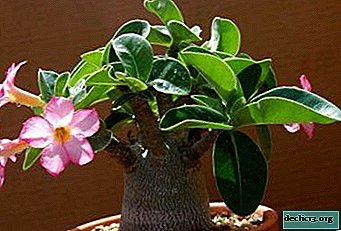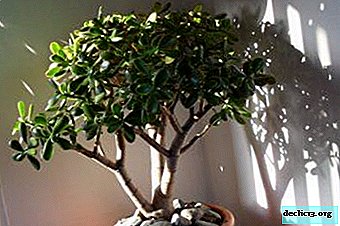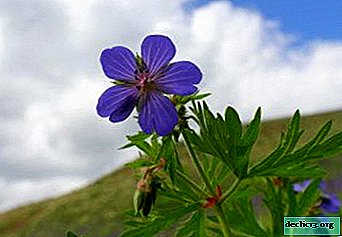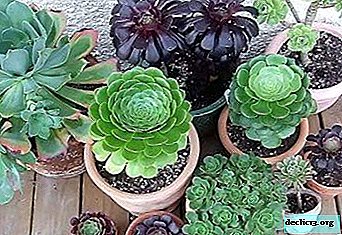Decorate your apartment with an unusual beauty: pink orchid
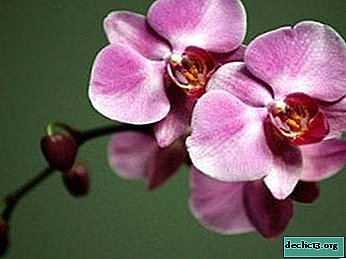
The famous American writer Edgar Poe called the orchid "the product of the secret forces of tropical nature." One cannot but agree with such a figurative and accurate description of a mysterious flower.
One of these "secrets" can be called a pink orchid. She, like a young girl, is romantic, sophisticated, vulnerable and tender.
By its presence alone it adorns the surrounding world with its purity and reverence, radiates chastity, innocence, selflessness and sincerity.
What is it?
Pink orchid is one of the many hybrid species of miniature phalaenopsis of the oldest family of orchids, the genus epiphytic, so the favorite habitat is tree trunks, mountain forests, stones and ravines, the flower is easily located thanks to strong winding roots.
Reference! According to the assumptions of botanists, she was born several centuries ago, in the tropics - the island of Boneo, Taiwan, the Philippines. The first representatives of this genus became known to science in the 18th century, due to the discovery of Professor Blume. Unknown orchid flowers were called phalaenopsis, literally - "nocturnal butterflies."Description of appearance
Pink orchid - a miniature view of the phalaenopsis, leaves are oval, slightly oblong, have an unusual color:
- bright;
- saturated;
- dark green color;
- at the top of the sheet smoothly turns into a reddish color below.
Its length is only 8 cm; a curved, brightly purple stalk - a flower stalk is relatively short, about 20 cm. The whole inflorescence, consisting of 15 flowers - miniatures, harmoniously arranges on it, their size rarely grows more than 3 cm. Their color palette is non-screaming - from pale pink to white. The flowers themselves are whitish-pink, and the side petals are pink, slightly upward, like the wings of a butterfly. The tongue is bright, looks like a tie, stands out against the delicate background of the whole flower.
With a white lip
Schiller Phalaenopsis - this pink orchid can bloom in harsh January and continues its color until the onset of spring. Inflorescences grow up to one and a half meters; there are many flowers of medium size pale pink on it, up to 6 cm in length. The leaves are dark, oblong, hard. This gentle lady is very thermophilic, afraid of drafts and cold.
Photo
Below you can see a photo of a beautiful pink orchid in a pot:





Breeding History
The first orchid species came to Europe in the early 18th century, and a little later, in the 19th century, thanks to the efforts of breeders, some species began to be grown at home. As a result of crossbreeding, indoor philenopsis orchids, their hybrid species feel great and breed in apartments, at dachas, verandas and balconies of houses. The peculiarity of this species is that the leaves retain water well, which is probably why their color is so rich and vibrant.
Care
In order for the flower to feel good, fragrant and bloom for a long time, certain conditions are needed:
Temperature
It is necessary to take into account the main condition of the temperature regime: 20 ° C in winter and up to 35 ° C in summer. In winter, you need to make sure that the orchid does not freeze, the unacceptable temperature is below 10 ° C, this can destroy the flower. It is better to place a pink orchid on the windows facing east or west, direct sunlight can burn the leaves, in the summer it is necessary to darken.
Lighting
In winter and autumn, a delicate pink orchid needs a full daylight for full growth. Therefore, in the evening it is better to turn on special lamps for backlighting. But too intense lighting can harm. In summer, when it is especially hot, the flower needs to be removed from direct sunlight. You can remove it by the curtain or put it in the shade, otherwise the leaves can get a serious injury - a burn. They will begin to hurt, white spots will appear immediately, then the pressed ones will dry, they may even turn black.
Watering
 For pink orchids should be moderate. In summer, the substrate is moistened as it dries 1 to 2 times a week. It is advisable to reduce watering in winter and autumn.
For pink orchids should be moderate. In summer, the substrate is moistened as it dries 1 to 2 times a week. It is advisable to reduce watering in winter and autumn.
Before watering, arrange the roots for a little drying - airing, they need air. For irrigation, it is better to take settled water at room temperature.
It is better to water by immersion: lower the pot briefly into a bucket of water, and then let the water drain. Be sure to drain the water from the pallets to avoid root decay.Important: Do not overdry or moisten the roots too much. Monitor the condition of the roots.
Humidity
If the room is hot, not enough moisture, the orchid looks sluggish and painful, then you need to put small open containers with water near the pots or install a tray with wet pebbles. So the humidity reaches the required rate.
Top dressing
Fertilizer should not contain much nitrogen, it is better to use phosphorus-based extracts, it is he who gives the orchid strength and health. It is best to trust the professionals and purchase ready-made fertilizer in special stores marked: "For orchids." Read the instructions carefully!
Fertilizer rule:
- Fertilize the flower only in the wet state of its substrate, so as not to burn the roots.
- Fertilize 1 time in 2 weeks during the period of growth and flowering.
- Beware of overfeeding the flower - it may not bloom for a long time, and this is also dangerous for the leaves, they may crack.
Transfer
You should use a special substrate, which can be bought at any specialized store. If this is not possible, you can do it yourself by mixing all the components:
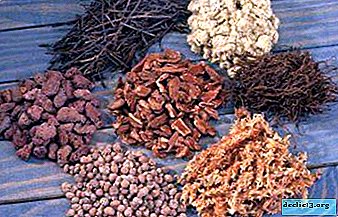 tree bark;
tree bark;- pieces of coal;
- moss sphagnum;
- small shells.
Breeders also use this mixture:
- pebbles - for the drainage system;
- 10 parts of charcoal;
- 1 part of dry pine bark.
For planting, it is better to take a transparent pot, this will allow you to clearly see the root of the orchid, preventing diseases and complications, observing its growth and development.
Important: Transplanting a flower costs 1 time in 2-3 years, not more often, and then if necessary: the pot has become small, the roots do not fit, the orchid has slowed down its development and growth.The procedure is best done after flowering, following the sequence of actions:
- place a drainage layer on the bottom of the pot;
- we clean the roots, cut off dried shoots and carefully clean from the old soil;
- the updated plant is placed in a new pot and gently fall asleep with a substrate;
- do not press down so as not to damage the fragile processes of the root.
Breeding
Like all phylenopsis, a pink orchid propagates vegetatively. When propagating from a pink orchid, the "children" who grow on the flower are separated. They must be separated when transplanting the plant. Only after a year can you expect new inflorescences.
The roots must not be allowed to twist, they should be in an upright position, freely located throughout the earthen coma.
Pests and diseases
Risk zone for pink orchid:
- If the air is overdried, the flower is threatened with defeat by scale insects.
- With excessive moisture, the root is susceptible to parasites:
- aphid;
- spider mite;
- decay.
- With excessive watering, there is a threat of the appearance of fungal infections.
How to avoid diseases and viruses?
 If the leaves are rotten - this is a sure sign of improper care.
If the leaves are rotten - this is a sure sign of improper care.- The leaves wrinkled and darkened - saturate the roots with moisture, they simply do not have enough water.
- It is necessary to process the flower with special chemical compounds, having previously studied the instructions.
- If there is an excess of moisture and light, and the leaves are yellowed.
- you need to reduce watering, reduce air humidity, urgently remove in dark places.
- If the leaves began to fall, then the humidity is insufficient, and the air temperature is too high for the orchid. Refresh, spray, make the right lighting for her.
- Make sure that the leaves do not get wet, and if they get wet, they need to quickly get rid of excess moisture.
Pink orchids in China are considered a symbol of luxury. Feng Shuyu experts say: breathing in the aroma of a flower, you can achieve peace of mind and peace.
This orchid is unlikely to be suitable for offices, banks, the office - the situation is too nervous and business. But at home, in your favorite kitchen, where you can relax after a hard day, a pink miracle - a flower will produce a therapeutic effect - it will relax, calm, and set you up for a nice cozy evening with your beloved people.

 tree bark;
tree bark; If the leaves are rotten - this is a sure sign of improper care.
If the leaves are rotten - this is a sure sign of improper care.


